Top 10 Best Pitch Deck Designs to Inspire Your Next Presentation

Introduction
Crafting a pitch deck that resonates with investors is more than assembling data and slides—it’s about narrative design that captivates and convinces. The most successful startup pitch decks—from Uber, WeWork, and Airbnb—go beyond the basics, turning their slides into storytelling engines. By framing a clear problem, presenting an innovative solution, and quantifying market potential, these decks create emotional connection and logical conviction.
They spotlight the essentials—market analysis, traction, team, and business model—so every slide is both informative and engaging. This guide breaks down strategies and structures used by top companies, offering practical tips to build an investor presentation that doesn’t just inform but inspires action, leaving investors eager to join your vision.
Key Elements of a Successful Pitch Deck
A compelling pitch deck design is more than a file of slides; it’s a cohesive story arc. Open with a sharp problem statement, introduce your solution as the hero, and guide investors through vision, mechanics, and momentum. Keep slides visually clean and easy to scan, focusing on the problem, solution, market size, business model, traction, roadmap, and team.
Consider proven frameworks used by top firms. Sequoia’s pitch deck framework stresses an “analysis”/market slide—size, growth, and trends that signal outsized potential. Similarly, DoorDash’s pitch deck leveraged traction to validate product-market fit and operational scalability.
Your goal isn’t just to share facts—it’s to tell a differentiating story. Use the team slide to add credibility and humanity, proving you’re the right people to execute. Close with a crystal-clear ask and CTA so investors know next steps, terms, and timing.
Uber: A Minimalist Approach to Highlighting Market Potential
Uber’s minimalist pitch deck wins with clarity and market potential. A clean layout and plain language make a complex idea instantly legible. By foregrounding the transportation problem—inefficiencies, price, availability—Uber tees up its ride-sharing solution as inevitable. This mirrors best practice: start with the problem, position the solution as the hero, then quantify the upside.
Beyond narrative, Uber underscores category scale and go-to-market logic, aligning with investor expectations. Even amid later headwinds—like a modest 11.4% YoY revenue growth in a recent quarter against a $200B+ industry backdrop—Uber’s historic 56.3% average annual growth over three years sustained the growth story. The lesson: pair simple storytelling with credible market math and visible traction.
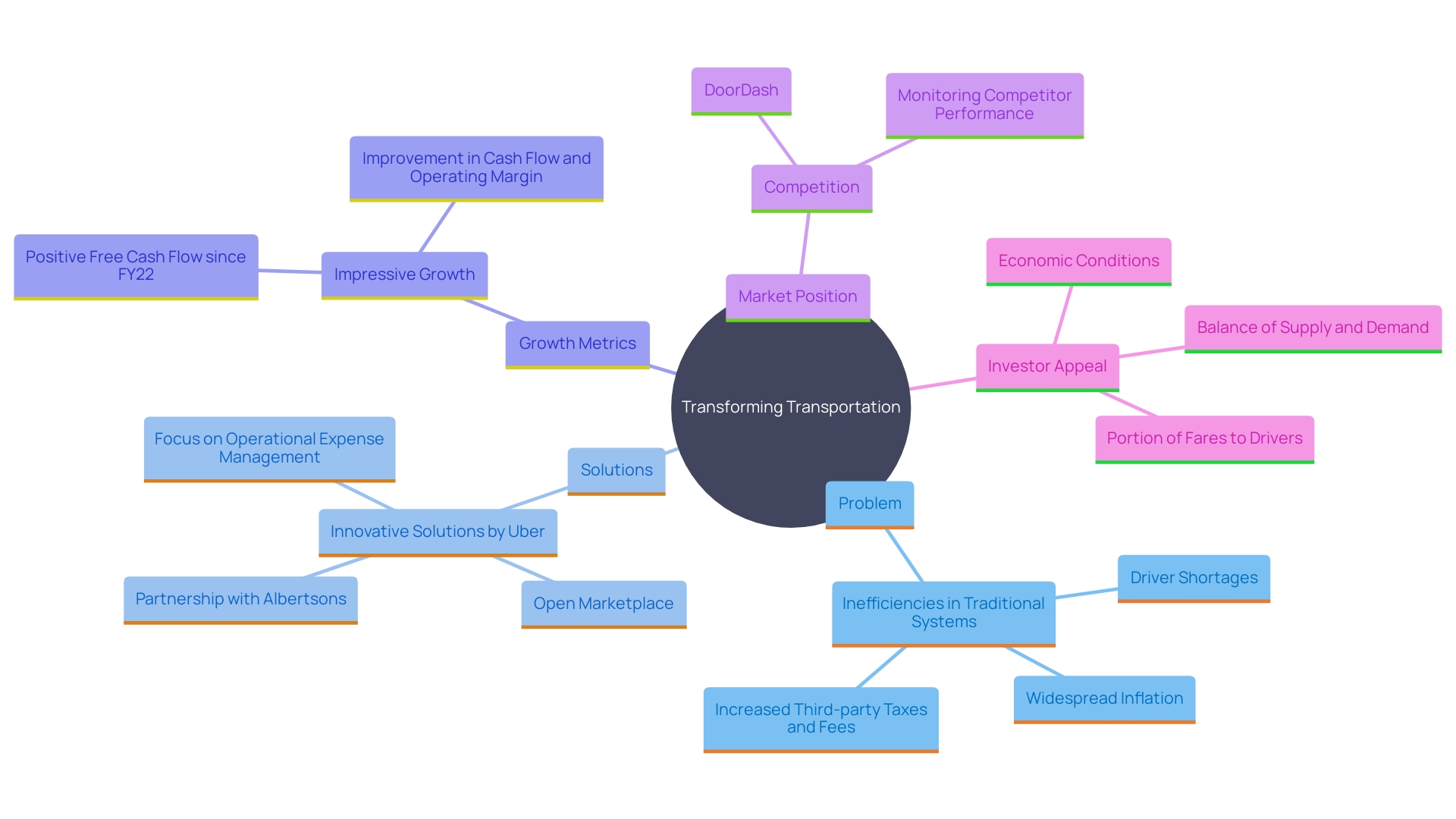
WeWork: Balancing Information and Visual Appeal
WeWork’s deck shows how to balance detail with design. Lush visuals of coworking spaces and a community-driven value proposition translated a real-estate model into an experience brand investors could feel. The slides clarified differentiation, demand drivers, and scale potential, turning abstract metrics into a memorable investor narrative.
The takeaway: a well-designed pitch deck should amplify your core thesis, not distract from it. Use concise storytelling, premium visuals, and proof points to build credibility. Your mission is to move the room—toward investing, partnering, or piloting—not just to present.
Front: Clean and Visual Structure for VC Funding
Front’s pitch deck is a clinic in clarity and flow. With sparse copy, strong visuals, and a problem → solution → market → model → traction sequence, the narrative is effortless to follow. Since 96% of investors want to see a deck before a meeting, structure matters: Front makes evaluation fast, signaling operational maturity.
The result is a founder-friendly, investor-ready deck: engaging overview, crisp problem framing, product benefits in plain English, market landscape with positioning, and monetization + traction that prove viability. It’s the right signal density for busy partners.

Buffer: Leveraging Solid Numbers for a Compelling Story
Buffer’s deck turns metrics into momentum. Clear charts and a straightforward voice narrate growth, retention, and revenue with data-driven credibility. Like the best examples, Buffer uses numbers to validate demand and efficiency, not just to decorate slides.
Investors respond to unit economics and repeatable growth mechanics. By surfacing the right KPIs—and explaining what drives them—Buffer builds confidence in scalability. The lesson: pair simple design with compelling metrics to make belief effortless.
Mixpanel: Problem-Solution Scenario with Data-Driven Insights
Mixpanel’s pitch deck nails the classic problem → solution pattern and backs it with data-driven insight. The deck quantifies the analytics gap product teams face, then shows how Mixpanel fills it with clear benefits and use cases. Customer testimonials add social proof, turning value claims into evidence.
This blend of market pain, product clarity, and third-party validation is powerful. Investors see a real problem, a differentiated solution, and users who care—exactly what a best pitch deck should deliver.
Airbnb: Painting a Clear Problem-Solution Scenario
Airbnb’s pitch deck is a storytelling masterclass. It frames a simple promise—affordable, unique travel—and enforces the rule of three: travelers save, hosts earn, culture is shared. The positioning line—“Book rooms with locals, rather than hotels”—is the perfect category carve-out: product, model, and target user in one sentence.
Airbnb also leveraged competitor context to validate market demand before explaining why it would win. The design is minimal, the logic tight, and the emotional hook undeniable—exactly how to turn a startup pitch into a movement.
Castle: Modern Design with a Focus on Customer Problems
Castle’s deck shines with modern aesthetics and customer-first framing. By leading with pain points, it earns attention, then maps each pain to a specific product promise. The visual system is sleek but secondary to clarity, keeping signal high and friction low.
Investors want urgency, not just beauty. Castle’s design underscores why now, why this team, and why this solution—making the investment case feel both timely and inevitable.
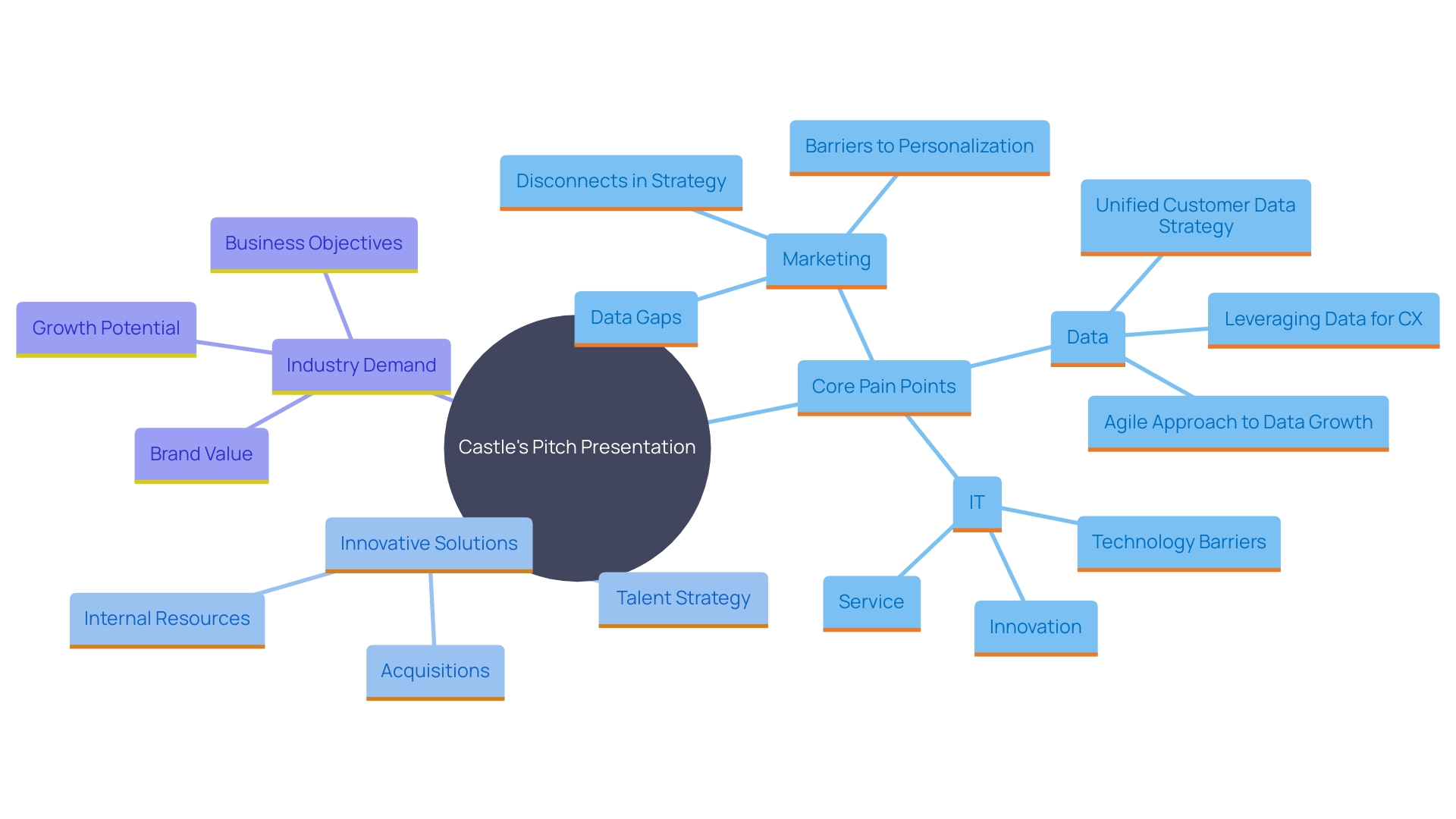
Backstartup: Engaging Design and Market Size Presentation
Backstartup combines engaging visuals with a rigorous market size narrative. The deck quickly communicates TAM/SAM/SOM, then ties that scale to beachhead segments and a go-to-market path. Starting with a big, obvious pain, the story builds urgency and credibility slide by slide.
Because many investors favor decks with clear story elements, Backstartup’s approach—problem, proof, path—helps stakeholders grasp scope and speed. The result is excitement with substance.
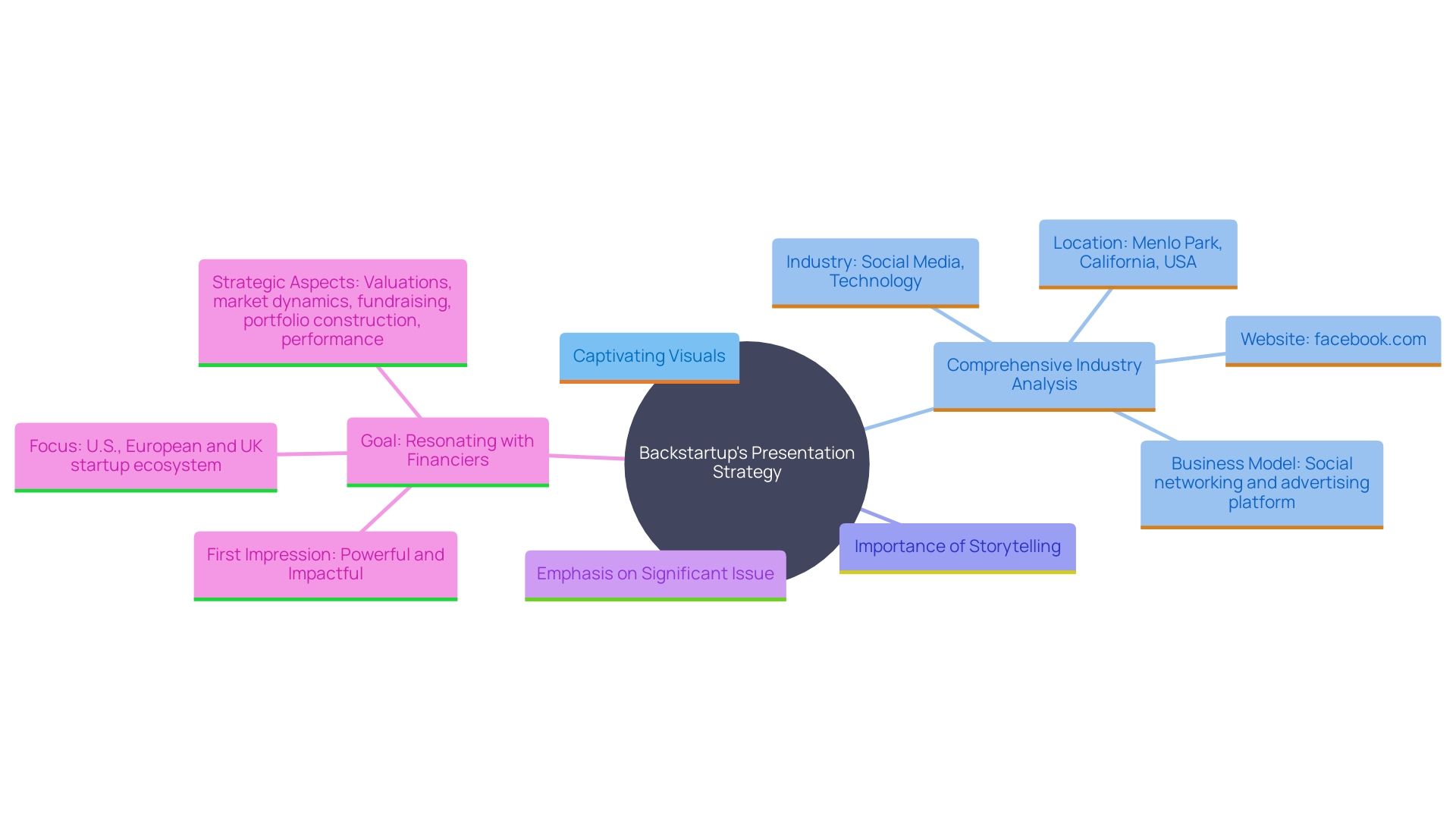
Purple Go: Telling a Story with Simple Statements and Visuals
Purple Go excels at simple statements + crisp visuals to break down complexity. The narrative starts with the customer problem, introduces the solution as hero, and charts the path to success without jargon. By anchoring claims in supporting data, they set context and lower cognitive load—ideal for early-stage fundraising.
Clarity is a moat. Purple Go’s story-first structure and information hierarchy make the market demand and growth potential feel obvious.
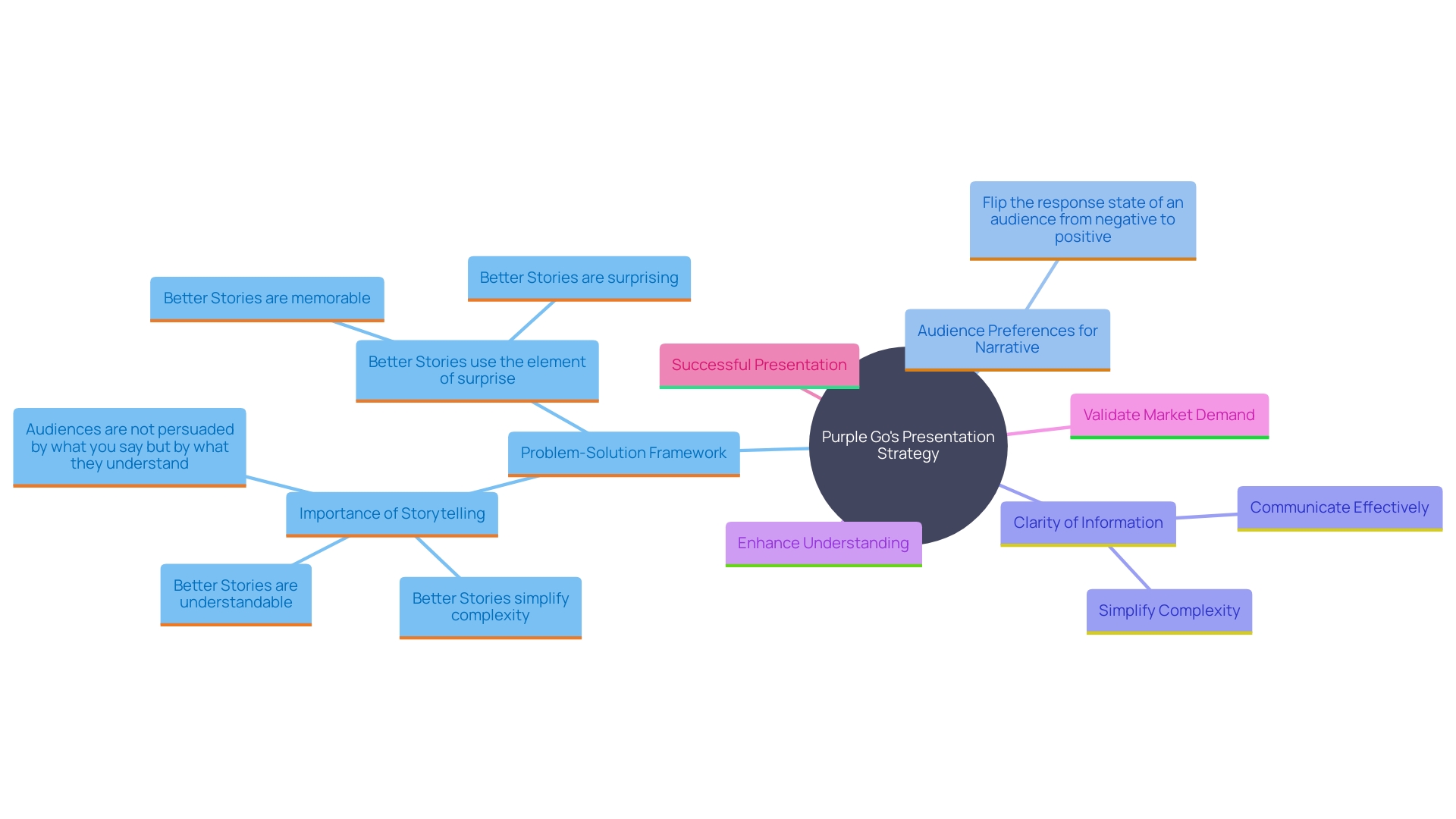
Alan: Masterful Visual Presentation and Clear Purpose
Alan’s pitch deck pairs polished visuals with crystal-clear purpose in health insurance. The messaging is concise; the slides are memorable; the value proposition is unmistakable. In a category crowded with complexity, Alan’s visual communication builds trust and accelerates understanding.
This is the model for engagement at a glance: clean design, tight copy, and slides that sell—not by hype, but by comprehension and credibility.
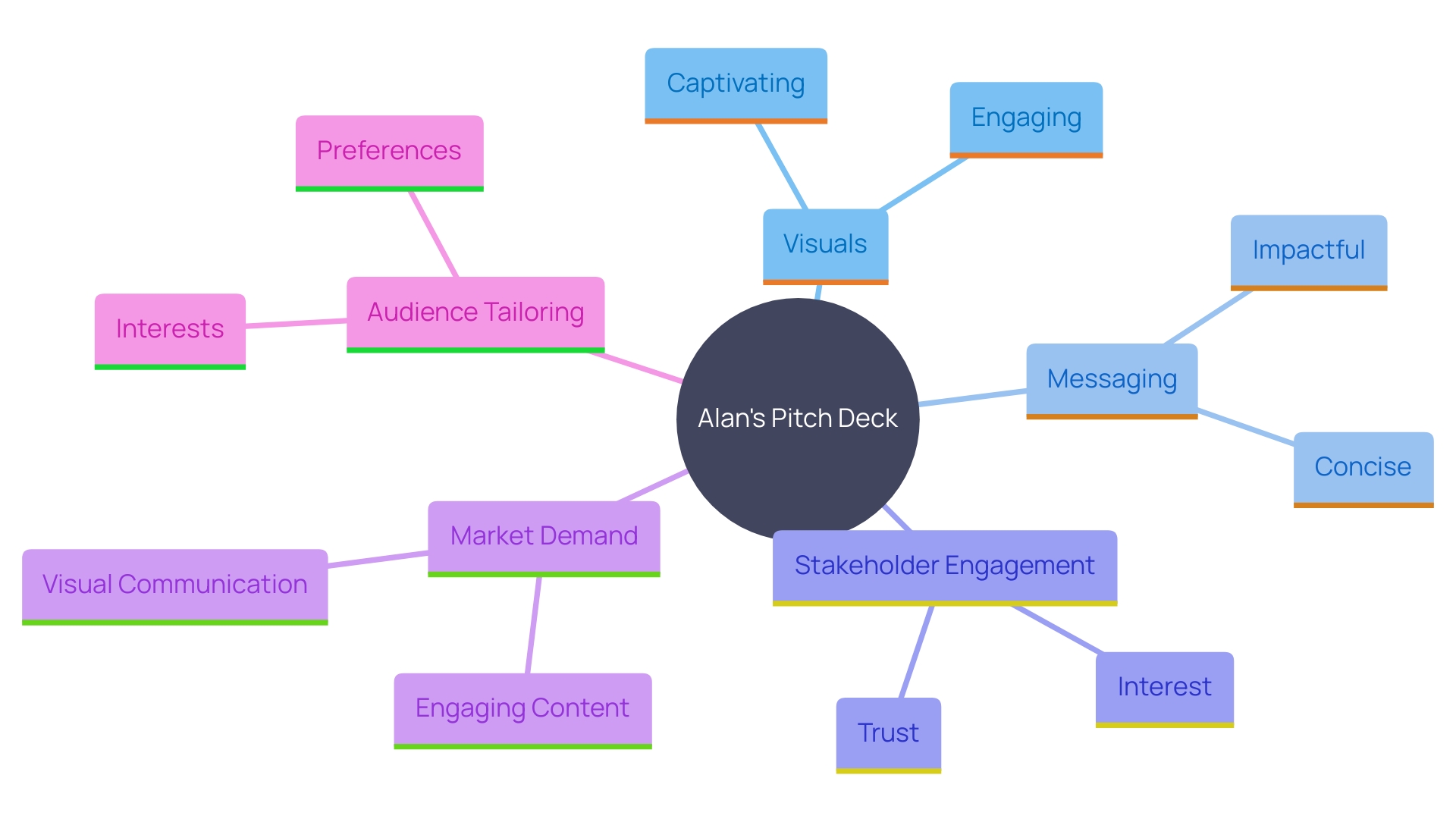
Conclusion
A successful investor presentation blends storytelling, data, and design to create conviction. The standout pitch decks from Uber, WeWork, and Airbnb prove that clarity around problem/solution and market—supported by traction and team—wins attention and capital.
Simplicity is a strategy. Decks like Front and Buffer show that clean design + hard numbers communicate maturity and readiness. Ultimately, your pitch deck should inform and inspire—weaving a narrative, proof, and a decisive call to action that motivates investors to engage. In a competitive landscape, story well told is advantage earned.
